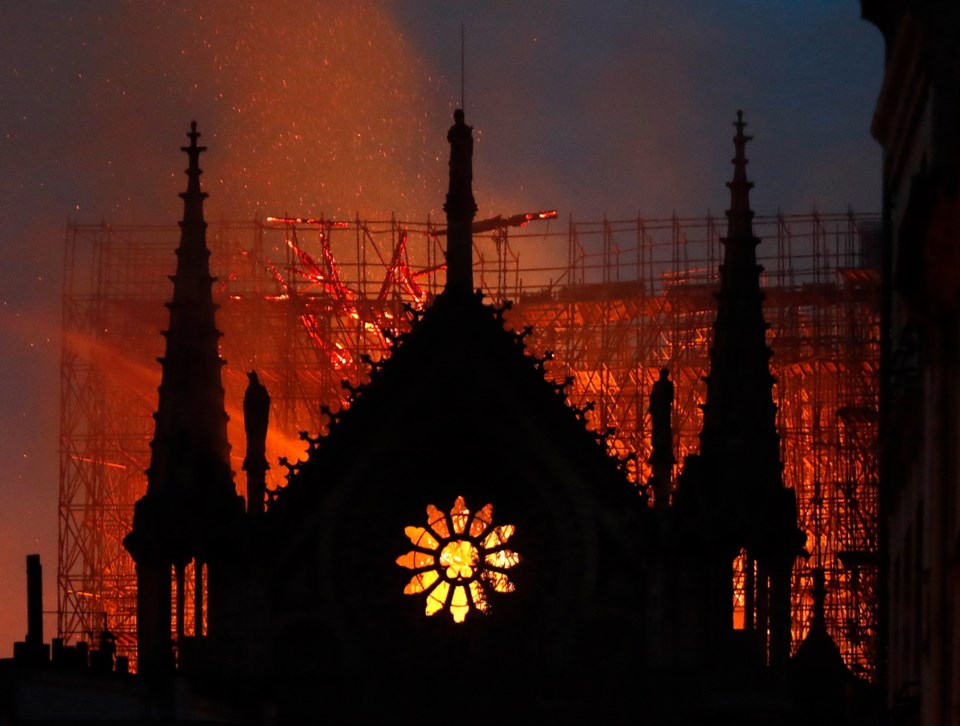To those of us who tend to think metaphorically, the fire that seriously damaged Notre Dame Cathedral in Paris at the beginning of Christian Holy Week gave pause for thought.
Especially at a time when, as the aptly named Alexandra de Sanctis wrote in the National Review: “To many Catholics, it feels as if the Church is on fire in a sense already. And now we are watching it blaze.”
Other writers also saw the fire as symbolic of the decline of organized religion, even as a sign of the fragility of integrity and decency in politics, but de Sanctis reminds us that Notre Dame is “a cathedral that withstood the bloodshed of revolution and the ravages of two world wars, yet now was tumbling in clouds of dark smoke, seemingly impossible to stop.”
Perhaps it was Notre Dame’s history that rendered what we watched, spellbound, even more painful. The symbolic significance of the damage in just a matter of hours of the much-visited and revered medieval edifice seemed almost too much to comprehend.
Notre Dame had stood towering apart from and above humankind’s more devastating instincts since construction began on the Île de la Cité in the middle of the Seine River, in 1163.
The classically Gothic structure was built over the course of hundreds of years and the lives of many generations of carpenters and masons, but wasn’t completed until 1345.
In the ensuing almost seven centuries, it stood as witness to both pious devotion and, at the same time, the worst excesses of man’s cruelty to man, all for the same predictable economic, socio-political and religious reasons that divide humanity today.
During the French Revolution in 1789, angry mobs and revolutionaries looted the Gothic church, declaring that it wasn’t a church at all.
As part of a popular move to disrupt Rome’s grip on the French monarchy, more than two dozen statues affixed to the church facade were publicly decapitated the same year, as thousands of citizens along with Louis XVI and his wife Marie Antoinette met a similar gruesome fate at what is now Place de la Concorde
Even when, after the German occupation of France, General Dietrich von Choltitz was ordered by Hitler to reduce Paris and its cathedral to ashes in 1944, the general refused, saying that he could not be responsible for the demise of such a beautiful city, much less its cathedral.
Larry Collins and Dominic La Pierre later memorialized Von Choltitz’s actions in the book Is Paris Burning?
Great cathedrals such as Notre Dame, Norway’s Nidaros Cathedral, the Sagrada Familia in Barcelona, the Santa Maria del Fiore in Florence, Winchester Cathedral in England, St. Basil’s in Moscow and the Cathedral Church of Saint Peter and Saint Paul in Washington, D.C., were all built to a single purpose: Their vastness was designed to force devotees to look upward and be reminded of their insignificance compared with the purposes of a greater being.
Even the word “cathedral” in Latin or Greek, means “chair,” because in the “cathedra,” the chair or the seat, a bishop would teach, sanctify, oversee and guide the everyday life of the people of a particular diocese.
Despite this centralization of religious supremacy and the Reformation that challenged the dominance of Rome, it was not contentious religious philosophy that was the greatest threat to these mighty buildings — it was always fire.
Medieval churches, built mostly of wood and tinder dry, burned easily. The cathedral at Canterbury in England caught fire in 1174 when a nearby house fire jumped structures. In Mainz, Germany, the candles used to illuminate the city’s new cathedral accidentally brought the structure to the ground on the very day of its consecration in 1015. The cathedral at Chartres was heavily damaged by fire in 1194, and an inferno allegedly killed about 1,000 people at Vézelay in France in 1120.
Matthew Gabriele, professor of medieval studies, quotes 11th-century historian Ralph Glaber about the destruction of the cathedral at Orléans in northern France.
According to Glaber, horrifying signs and portents occurred in the year 988, pointing to something terrible on the horizon. The following year the city and its church were destroyed by fire.
To many, the fire that damaged Notre Dame was nothing more than that. To others, looking for signs and coded symbols as to what the Notre Dame fire represented, it was all about much more.
Geoff Johnson is a former superintendent of schools.



